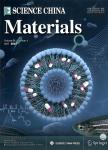版权所有:内蒙古大学图书馆 技术提供:维普资讯• 智图
内蒙古自治区呼和浩特市赛罕区大学西街235号 邮编: 010021

作者机构:School of Chemistry Chemical Engineering and Life Sciences Wuhan University of Technology State Key Laboratory of Advanced Technology for Materials Synthesis and Processing Wuhan University of Technology
出 版 物:《Science China Materials》 (中国科学(材料科学(英文版))
年 卷 期:2019年第62卷第5期
页 面:633-644页
核心收录:
基 金:supported by grants from the National Natural Science Foundation of China (21673169 and 51672205) the National Key R&D Program of China (2016YFA0202602) the Research Start-Up Fund from Wuhan University of Technology the Fundamental Research Funds for the Central Universities (WUT: 2017IB005, 2016IVA083)
主 题:three-dimensional replication porous carbon oxyrgen electrodes lithium-oxygen batteries zinc oxide nanostructure
摘 要:The robust porous architectures of active materials are highly desired for oxygen electrodes in lithium–oxygen batteries to enable high capacities and excellent reversibility. Herein, we report a novel three-dimensional replication strategy to fabricate three-dimensional architecture of porous carbon for oxygen electrodes in lithium–oxygen batteries. As a demonstration, ball-flower-like carbon microspheres assembled with tortuous hollow carbon nanosheets are successfully prepared by completely replicating the morphology of the nanostructured zinc oxide template and utilizing the polydopamine coating layer as the carbon *** used as the active material for oxygen electrodes, the three-dimensional porous architecture of the prepared ballflower-like carbon microspheres can accommodate the discharge product lithium peroxide and simultaneously maintain the ions and gas diffusion paths. Moreover, their high degrees of defectiveness by nitrogen doping provide sufficient active sites for oxygen reduction/evolution *** the prepared ball-flower-like carbon microspheres demonstrate a high capacity of 9,163.7 mA h g-1 and excellent reversibility. This work presents an effective way to prepare three-dimensional architectures of porous carbon by replicating the controllable nanostructures of transition metal oxide templates for energy storage and conversion applications.